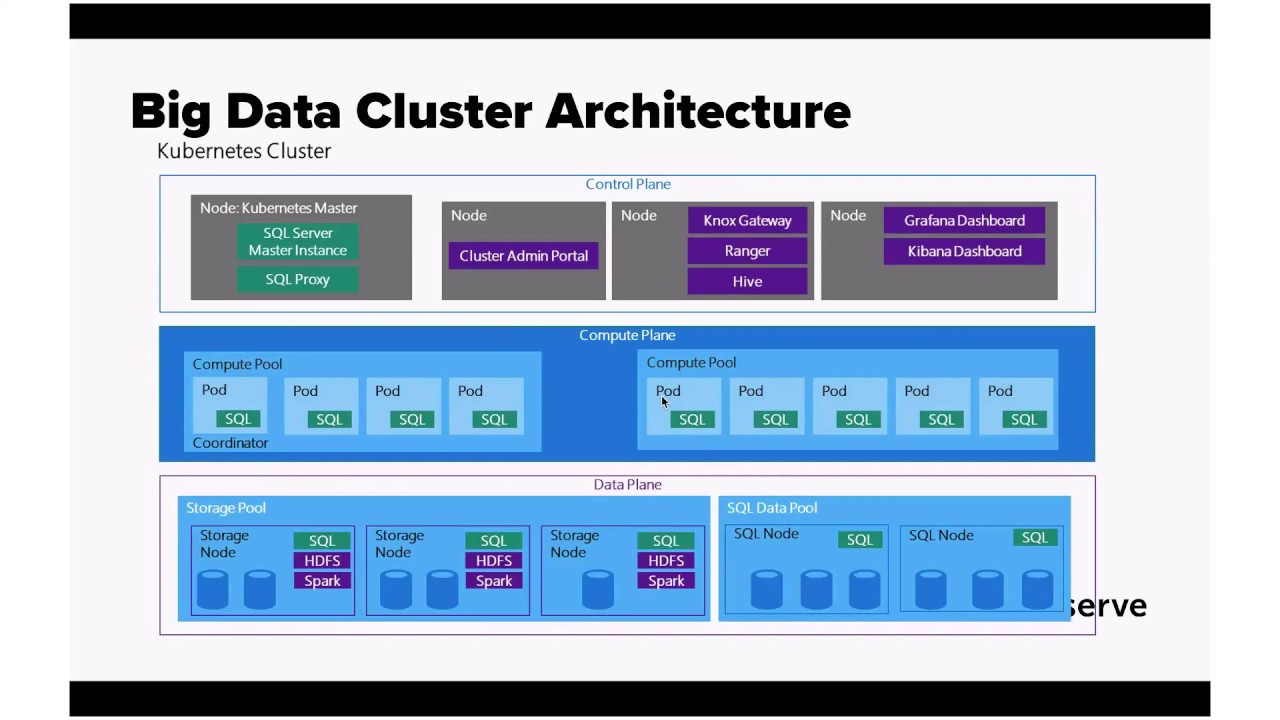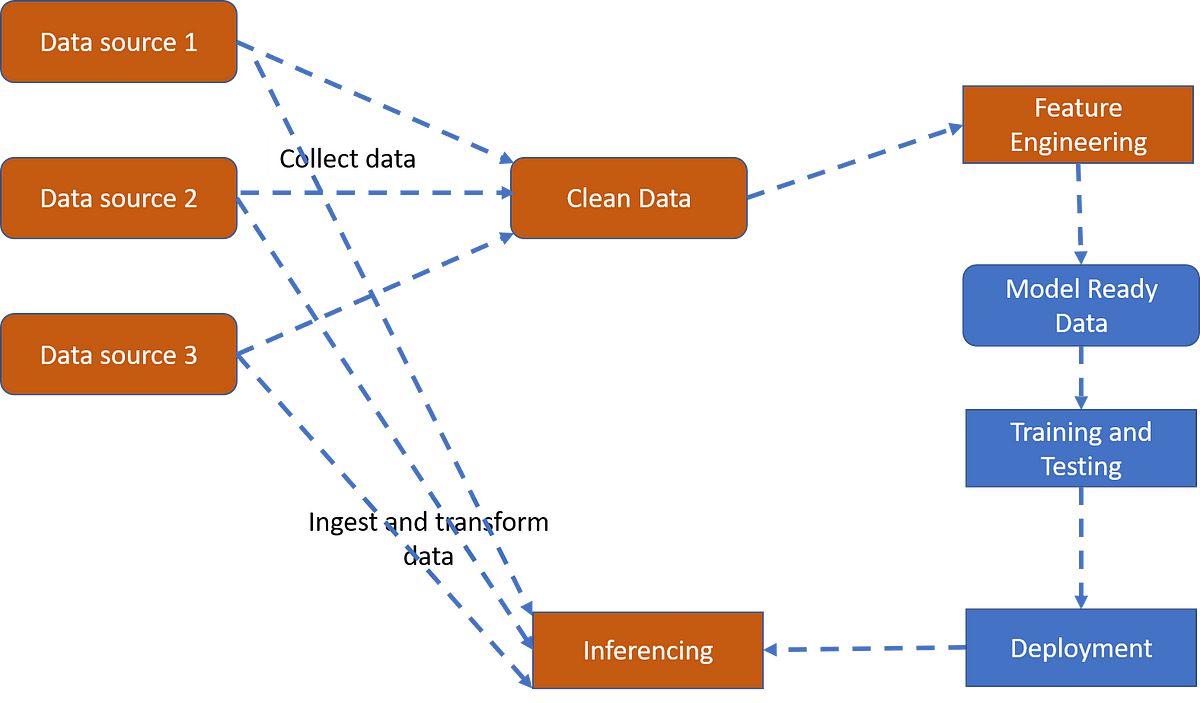Introduction
In today’s digital age, data has become a valuable asset for businesses and organizations. However, the sheer quantity and complexity of data that needs to be processed and analyzed can be overwhelming. Big data refers to the large volumes of data that are generated at an unprecedented rate from various sources such as social media, sensors, and transactions.
Processing big data poses significant challenges due to its size, variety, and velocity. Traditional computing methods are often inadequate to handle the massive amounts of data in a timely manner. This is where parallel computing comes into play.
Parallel computing is a technique that involves dividing a large task into smaller, manageable parts that can be executed simultaneously. It leverages the power of multiple processors or computers to perform computations in parallel, thereby significantly reducing the processing time.
This article explores the role of parallel computing in addressing the challenges of processing big data. It delves into the benefits of parallel computing, including parallelizability, speed and efficiency, scalability, fault tolerance, and data integration and analysis. Real-world examples of parallel computing in big data processing further illustrate its practical applications.
By harnessing the power of parallel computing, businesses can unlock the full potential of their big data, gaining valuable insights, driving innovation, and making informed decisions. Let’s dive deeper into how parallel computing helps with processing big data.
What is parallel computing?
Parallel computing is a computational technique that involves breaking down a large task into smaller subtasks that can be executed simultaneously on multiple processors or computers. Unlike traditional serial computing, which performs tasks sequentially, parallel computing harnesses the power of parallelism to speed up computational processes and handle complex computations more efficiently.
In parallel computing, the workload is divided into smaller parts, each of which is processed concurrently. These smaller tasks can be executed on separate cores within a single processor, multiple processors within a single machine, or even across multiple machines connected in a network. By dividing and conquering, parallel computing enables faster processing and increased throughput.
There are two primary types of parallel computing: task parallelism and data parallelism.
Task parallelism focuses on dividing a task into smaller subtasks, with each subtask assigned to a separate processing unit. This approach is ideal for independent tasks that can be executed in parallel, such as calculations performed on different sets of input data or simulations with different parameters.
Data parallelism, on the other hand, involves dividing the data into smaller portions, with each portion processed by a separate processing unit. This approach is well-suited for tasks that require performing the same operation on multiple data points simultaneously, such as image processing or data mining.
The benefits of parallel computing extend beyond just faster processing times. It also enables resource utilization optimization, as multiple processors or machines can work together to efficiently complete a task. Additionally, parallel computing allows for scalability, as more processing units can be added to handle increasing workload demands.
Parallel computing has found applications in various fields, including scientific research, data analysis, financial modeling, artificial intelligence, and simulation. It has revolutionized the way complex computations are performed, enabling advancements in technology and scientific discovery.
In the next section, we will explore what big data is and the challenges encountered in processing it.
What is big data?
Big data refers to the vast volumes of structured, semi-structured, and unstructured data that are generated at an unprecedented rate from various sources. It is characterized by the three Vs: volume, velocity, and variety.
The volume aspect of big data refers to the massive quantities of data that are being produced every second. With the proliferation of digital devices, social media platforms, and IoT devices, data is being created at an exponential rate. This includes text, images, videos, sensor readings, transactional data, and much more.
The velocity of big data refers to the speed at which data is being generated and needs to be processed. Real-time and near-real-time data processing has become crucial for various applications, particularly in sectors such as finance, healthcare, and e-commerce, where prompt decision-making is necessary.
The variety of big data refers to the diverse types and formats of data that are being generated. Data can be structured, with a well-defined schema, such as data in a relational database. It can also be semi-structured, such as data in XML or JSON format, or unstructured, such as social media posts, emails, and multimedia content.
In addition to the three Vs, big data is also characterized by the concept of veracity. Veracity refers to the reliability and trustworthiness of the data. Big data often includes noise, inconsistencies, and errors, which need to be addressed during the processing and analysis stage.
The availability of big data presents numerous opportunities for organizations to gain valuable insights, make informed decisions, and drive innovation. By analyzing large datasets, businesses can uncover patterns, trends, and correlations that can lead to improved operations, customer satisfaction, and competitive advantage.
However, processing big data poses significant challenges. Traditional computing systems are often ill-equipped to handle the massive volumes, variety, and velocity of data. The processing speed and capacity of single machines are limited, leading to prolonged processing times and bottlenecks. Additionally, the lack of suitable algorithms and tools for big data analytics further complicates the processing and analysis tasks.
In the next section, we will explore the challenges encountered in processing big data and how parallel computing helps overcome these challenges.
Challenges in processing big data
Processing big data poses several challenges due to its volume, variety, velocity, and veracity. These challenges include:
- Scalability: Traditional computing systems may not have the scalability to handle the massive volumes of data generated in real-time. As the data size grows, the processing time increases, leading to performance bottlenecks and delays in obtaining insights from the data.
- Data integration: Big data often comes from various sources, in different formats and structures. Integrating and combining these diverse datasets can be complex and time-consuming, requiring data preprocessing and cleaning to ensure consistency and accuracy.
- Data storage and management: Storing and managing big data requires robust infrastructure and systems capable of handling large volumes of data efficiently. Traditional databases may not be able to handle the scale and complexity of big data, requiring the use of distributed data storage and management systems like Hadoop and NoSQL databases.
- Data analysis: Big data analysis involves processing and analyzing massive amounts of data to uncover meaningful patterns, trends, and insights. Traditional analytical approaches may not be suitable for big data, as they lack the speed and scalability required to process large datasets in a timely manner.
- Data privacy and security: With the increasing volume and variety of data, ensuring data privacy and security becomes more challenging. Big data often contains sensitive information, making it crucial to implement robust security measures to protect against unauthorized access and breaches.
These challenges highlight the need for innovative approaches to process and analyze big data efficiently. Parallel computing has emerged as a powerful solution to overcome these challenges and unlock the potential of big data.
In the next section, we will explore how parallel computing helps with processing big data by leveraging its parallelizability, speed and efficiency, scalability, fault tolerance, and data integration and analysis capabilities.
How does parallel computing help with processing big data?
Parallel computing plays a crucial role in addressing the challenges encountered in processing big data. It offers several benefits that help overcome the limitations of traditional computing methods. Let’s explore how parallel computing helps with processing big data:
1. Parallelizability: Big data processing tasks can be divided into smaller subtasks that can be executed in parallel. By leveraging parallel computing techniques, these subtasks can be processed concurrently, significantly reducing the overall processing time. This parallelizability allows for efficient utilization of computing resources, enabling faster and more efficient processing of big data.
2. Speed and efficiency: Parallel computing utilizes multiple processors or machines to divide and conquer the processing tasks. This parallel execution results in dramatic improvements in processing speed and overall efficiency. The ability to process multiple tasks simultaneously ensures faster data processing, enabling organizations to obtain insights and make decisions in real-time or near-real-time, which is crucial in today’s fast-paced business environment.
3. Scalability: Big data is often characterized by its massive volume, and traditional computing systems may not have the scalability to handle such large-scale data processing. Parallel computing addresses this challenge by allowing for distributed computing across multiple machines or clusters. This scalability enables organizations to process and analyze massive amounts of data quickly, ensuring that the processing time does not increase exponentially as the data size grows.
4. Fault tolerance: When dealing with big data, the possibility of hardware failures or network issues is always a concern. Parallel computing frameworks, such as Hadoop, provide built-in fault tolerance mechanisms. By dividing the data and processing tasks across multiple machines, parallel computing ensures that if any machine fails, the computation can continue on other available machines. This fault tolerance capability enhances the reliability and resilience of big data processing.
5. Data integration and analysis: Parallel computing enables the integration and analysis of diverse datasets that come from different sources and formats. By processing and analyzing data in parallel, the parallel computing framework can combine and aggregate results from multiple data sources efficiently. This capability enables organizations to gain comprehensive insights from their big data by identifying patterns, correlations, and trends that may not be apparent when analyzing single datasets in isolation.
Overall, parallel computing revolutionizes the processing of big data by providing the speed, scalability, fault tolerance, and analytical capabilities required to effectively handle large volumes of data. It enables organizations to harness the power of their big data, uncover valuable insights, and drive innovation in various industries.
In the next section, we will explore real-world examples of parallel computing in big data processing, showcasing its applications and impact.
Parallelizability
One of the key advantages of parallel computing in processing big data is its inherent parallelizability. Big data processing tasks can be divided into smaller subtasks that can be executed concurrently, leveraging the power of multiple processors or machines. This parallelizability allows for efficient utilization of computing resources and significantly reduces the overall processing time.
With parallel computing, a large processing task can be broken down into smaller units, each of which can be assigned to a separate processing unit. These units can then work on their respective subtasks simultaneously, ensuring that the processing workload is distributed evenly and completed more quickly.
This parallel execution of subtasks is particularly beneficial for big data processing, as it enables organizations to handle massive volumes of data more efficiently. Instead of processing the entire dataset sequentially on a single machine, parallel computing allows for the division of the workload across multiple machines or cores, resulting in faster processing times.
Parallelizability also enables organizations to scale their big data processing capabilities based on their needs. As the data volume grows, more processing units can be added to the parallel computing system, allowing for seamless scalability. This scalability is crucial for accommodating the ever-increasing amounts of data generated in real-time and handling the processing demands of large-scale analytics projects.
Moreover, parallelizability extends beyond just computational aspects. It can also be applied to other stages of big data processing, such as data ingestion and data transformation. Data can be ingested and processed in parallel, ensuring a timely and efficient flow of data from various sources to the analytical pipelines. Similarly, data transformation and preprocessing tasks can be parallelized, preparing the data for further analysis and reducing bottlenecks in the overall processing workflow.
Overall, the parallelizability of parallel computing enables organizations to handle the massive volumes of data involved in big data processing. By executing subtasks concurrently, parallel computing significantly reduces processing time, improves resource utilization, and enables seamless scalability. This parallel execution capability is a fundamental aspect of parallel computing that makes it a powerful tool for processing big data.
In the next section, we will explore the benefits of speed and efficiency that parallel computing brings to the processing of big data.
Speed and efficiency
Parallel computing offers significant advantages in terms of speed and efficiency when it comes to processing big data. By leveraging multiple processors or machines to execute tasks simultaneously, parallel computing accelerates the processing time and improves overall efficiency.
With big data processing, time is of the essence. The ability to analyze and extract insights from data quickly allows organizations to make timely decisions and respond to changing market conditions. Parallel computing achieves this by dividing the data and processing tasks into smaller units that can be executed in parallel.
By distributing the workload across multiple processors or machines, parallel computing drastically reduces the processing time compared to traditional serial computing methods. It enables organizations to process massive volumes of data at an accelerated pace, providing near real-time or real-time insights that are crucial for time-sensitive applications and decision-making processes.
Another aspect that contributes to the speed and efficiency of parallel computing is the ability to exploit the full potential of computing resources. Unlike serial computing, where only one processor is utilized at a time, parallel computing can harness the power of multiple processors simultaneously. This leads to enhanced computational capabilities and improved efficiency in handling large-scale data processing tasks.
Parallel computing not only speeds up the processing time but also improves the overall efficiency of big data processing workflows. By breaking down complex tasks into smaller, more manageable subtasks, parallel computing allows for better resource allocation and utilization. Each processing unit can focus on its assigned subtask, ensuring optimal usage of computing resources and minimizing idle time.
Additionally, parallel computing enables organizations to achieve higher throughput and handle larger workloads. As more processing units are added to the system, more data can be processed in parallel, resulting in faster completion of tasks and increased overall throughput.
Furthermore, the efficiency of parallel computing extends to the scalability of big data processing. With the ability to add more processing units to the system, parallel computing offers a scalable solution to handle the ever-growing volumes of data. As data sizes increase, organizations can easily scale their parallel computing infrastructure to meet the processing demands, ensuring that the processing time remains under control even with exponential data growth.
In summary, parallel computing provides significant speed and efficiency benefits for processing big data. By executing tasks in parallel across multiple processors or machines, it accelerates the processing time, improves resource utilization, and enables scalable and efficient processing of massive volumes of data.
In the next section, we will explore the scalability aspect of parallel computing and its impact on processing big data.
Scalability
One of the key advantages of parallel computing in processing big data is its scalability. Big data is characterized by its massive volume, and traditional computing systems may not have the scalability to handle such large-scale data processing. Parallel computing addresses this challenge by allowing for distributed computing across multiple processors or machines, enabling organizations to process and analyze massive amounts of data quickly.
Parallel computing enables organizations to scale their computational resources based on the size and complexity of the data they are dealing with. As the data volume grows, more processing units can be added to the parallel computing system, ensuring that the processing time remains manageable and does not increase exponentially.
This scalability advantage is particularly crucial in the era of big data, where the amount of data being generated is growing at an unprecedented rate. By leveraging parallel computing, organizations can avoid bottlenecks in processing and analysis and ensure timely insights from the data. Whether it’s analyzing the massive volumes of customer data, sensor data, or log data, parallel computing provides the capability to handle the ever-increasing demands of big data processing.
Scalability in parallel computing extends beyond just the number of processing units. It also encompasses the ability to handle varying workloads efficiently. Parallel computing systems can dynamically allocate resources based on the workload, ensuring that the available resources are effectively utilized. This adaptability allows for seamless scaling up or down of computational resources based on the specific requirements of the big data processing task.
Another aspect of scalability in parallel computing is the ability to handle both structured and unstructured data. Big data encompasses various types of data, including text, images, videos, and sensor readings. Parallel computing frameworks and algorithms have the flexibility to process and analyze different types of data effectively, enabling organizations to gain insights from diverse data sources without compromising scalability.
Moreover, the scalability of parallel computing extends beyond just data processing tasks. It also applies to other stages of the big data processing pipeline, such as data ingestion, storage, and transformation. Parallel computing systems can scale these stages to handle the influx of data, ensuring smooth and efficient data flow throughout the processing pipeline.
Overall, the scalability of parallel computing allows organizations to handle the ever-growing volumes of data involved in big data processing. By dynamically allocating resources and scaling systems based on workload and data size, parallel computing enables efficient and effective processing of massive amounts of data.
In the next section, we will explore the fault tolerance capability of parallel computing and its significance in processing big data.
Fault tolerance
Fault tolerance is a critical aspect of parallel computing that plays a significant role in processing big data. Big data processing involves handling vast volumes of data, and the possibility of hardware failures or network issues is always a concern. Parallel computing frameworks, such as Hadoop, provide built-in fault tolerance mechanisms to address these issues.
Parallel computing achieves fault tolerance by dividing the data and processing tasks across multiple processors or machines. Each processing unit works on its assigned subtask, and in the event of a failure, the work can be seamlessly transferred to another available processing unit. This fault tolerance capability ensures that the overall computation can continue uninterrupted, minimizing the impact of failures on the processing of big data.
With big data, which can include terabytes or even petabytes of data, the likelihood of encountering failures during processing is higher. Hardware failures, software errors, or network disruptions can occur, potentially disrupting the processing workflow. Fault tolerance in parallel computing helps mitigate the impact of these failures, providing robustness and reliability to the overall system.
Parallel computing frameworks use a combination of techniques to achieve fault tolerance. These techniques include data replication, task redundancy, and automatic recovery mechanisms. Data replication involves storing multiple copies of the data on different machines, ensuring that data is still available even if one machine fails. Task redundancy involves executing multiple instances of a task, enabling failure recovery without affecting the overall processing progress. Automatic recovery mechanisms monitor the system for failures and automatically redistribute the workload to alternate processing units.
By incorporating fault tolerance into the system design, parallel computing frameworks can detect failures, recover from them, and continue processing without significant disruption. This reliability is essential in big data processing scenarios, as it ensures that valuable insights can still be obtained even if individual components of the system experience failures.
Furthermore, fault tolerance in parallel computing contributes to the overall resiliency of big data processing systems. The ability to handle failures and adapt to changing conditions enhances the system’s ability to recover quickly and continue processing without relying on manual intervention. In fast-paced environments where real-time insights are crucial, fault tolerance ensures consistent and reliable processing, even in the face of failures.
In summary, fault tolerance is a critical attribute of parallel computing in processing big data. By dividing tasks and data across multiple processors or machines and incorporating fault tolerance mechanisms, parallel computing ensures the continuity of processing even in the presence of failures. Fault tolerance adds robustness and reliability to big data processing systems, increasing their overall efficiency and resiliency.
In the next section, we will explore how parallel computing enables efficient data integration and analysis in the context of big data processing.
Data integration and analysis
Data integration and analysis are crucial steps in processing big data, and parallel computing plays a vital role in enabling efficient and effective integration and analysis of diverse datasets.
Big data often comes from various sources, in different formats and structures. Data integration involves combining and integrating these diverse datasets to create a unified view of the data for analysis. Parallel computing provides the capability to process and analyze these datasets in parallel, ensuring that the integration process is efficient and scalable.
By dividing the data integration tasks across multiple processors or machines, parallel computing accelerates the integration process. Each processing unit can handle a subset of the data, combining and integrating its portion concurrently with the other units. This parallel execution of the integration tasks ensures that data from different sources can be efficiently combined, leading to a comprehensive and unified dataset for analysis.
In addition to data integration, parallel computing also enables efficient data analysis. Big data analysis typically involves performing complex computations on massive volumes of data. With parallel computing, these computations can be parallelized, distributing the workload across multiple processors or machines.
Parallel computing frameworks and algorithms utilize parallelism to process the data and perform analytical operations concurrently. Whether it’s running machine learning algorithms, analyzing patterns and trends in the data, or performing statistical calculations, parallel computing allows for faster and more efficient analysis of big data.
Parallel computing also facilitates exploratory data analysis, where analysts can interactively explore and analyze large datasets in a responsive manner. By leveraging parallel processing, visualizations, and interactive tools, analysts can iterate quickly and gain insights from the data in real-time, enabling more effective decision-making processes.
The parallel execution of data analysis tasks also supports concurrent and distributed processing of analytical queries. Multiple queries can be executed in parallel, ensuring responsiveness and minimizing query response times, even when dealing with large datasets.
Furthermore, parallel computing enables the scalability of data analysis processes. As the size of the data and the complexity of the analysis tasks increase, organizations can scale their parallel computing infrastructure to handle the growing demands. This scalability ensures that data analysis can be performed efficiently, even with exponential data growth or complex analytical requirements.
By enabling efficient data integration and analysis, parallel computing allows organizations to gain comprehensive insights from their big data. It facilitates the combination of diverse datasets and performs complex computations on a massive scale, enabling meaningful and valuable analysis. Parallel computing empowers organizations to unlock the full potential of their big data and make data-driven decisions to drive innovation and success.
In the next section, we will explore real-world examples of parallel computing in big data processing, demonstrating its practical application and impact.
Real-world examples of parallel computing in big data processing
Parallel computing has revolutionized big data processing in various industries, enabling organizations to tackle complex problems and extract valuable insights from vast amounts of data. Here are a few real-world examples of how parallel computing is used in big data processing:
1. Internet search engines: Search engines like Google, Bing, and Yahoo process massive amounts of data to provide relevant search results in a matter of seconds. Parallel computing is used to index and analyze a vast number of web pages, documents, and multimedia content, allowing for efficient and fast search queries through parallel processing and distributed computing.
2. Social media analysis: Social media platforms generate a wealth of data in real-time, including user posts, interactions, and multimedia content. Parallel computing is used to process and analyze this data for sentiment analysis, trend detection, and targeted advertising. By employing parallel algorithms, social media platforms can handle large-scale data processing and provide real-time insights to businesses and advertisers.
3. Genomics and bioinformatics: Genomic research involves analyzing vast amounts of DNA sequencing data. Parallel computing is used to process and analyze this data, allowing for faster and more accurate genome analysis, disease detection, and drug discovery. The parallel execution of algorithms helps researchers handle the computational complexities of genomic data analysis efficiently.
4. Financial markets: Financial institutions rely on big data analysis for making investment decisions, risk management, and fraud detection. Parallel computing techniques enable the analysis of large volumes of financial data in real-time, providing insights into market trends, portfolio optimization, and anomaly detection. Parallel computing ensures fast and reliable data processing, allowing financial institutions to make informed decisions and mitigate risks.
5. Weather forecasting: Weather forecasting requires processing vast amounts of meteorological data from satellites, weather stations, and other sources. Parallel computing is used to perform intricate weather simulations and predictions, leveraging distributed computing and parallel algorithms. By utilizing parallel computing techniques, weather forecasting models can process large volumes of data in a timely manner, enabling accurate weather predictions.
6. Transportation and logistics: The transportation and logistics industry deals with massive amounts of data related to vehicle movement, routes, deliveries, and inventory. Parallel computing allows for the efficient processing and analysis of this data, optimizing logistics operations, route planning, and inventory management. By leveraging parallel computing, transportation and logistics companies can improve efficiency, reduce costs, and streamline their operations.
These real-world examples highlight the versatility and impact of parallel computing in big data processing. By harnessing the power of parallelism, these industries can handle large volumes of data, perform complex computations, and obtain valuable insights in a timely manner.
In the concluding section, we will summarize the importance of parallel computing in processing big data and its role in driving innovation and advancement.
Conclusion
Parallel computing plays a vital role in processing big data, enabling organizations to overcome the challenges posed by the massive volumes, variety, and velocity of data. By dividing tasks into smaller subtasks that can be executed simultaneously, parallel computing significantly reduces processing time and improves overall efficiency.
Parallel computing offers several key benefits in handling big data. It provides parallelizability, allowing for the efficient utilization of computing resources and faster processing by dividing tasks among multiple processors or machines. Speed and efficiency are enhanced through parallel execution, enabling organizations to obtain timely insights and make data-driven decisions.
Scalability is another advantage of parallel computing, allowing organizations to seamlessly accommodate growing data volumes and increasing processing demands. Fault tolerance ensures the uninterrupted progress of data processing even in the presence of hardware failures or network issues, providing reliability and resilience to big data processing systems.
Parallel computing facilitates efficient data integration and analysis by processing diverse datasets in parallel and accelerating complex computations. It enables organizations to gain comprehensive insights from their big data, empower decision-making processes, and drive innovation.
Real-world examples across various industries illustrate the practical applications and impact of parallel computing in big data processing. From search engines and social media analysis to genomics and financial markets, parallel computing has revolutionized the way organizations handle and exploit their big data assets.
In conclusion, parallel computing is an indispensable tool for organizations processing big data. By leveraging its parallel execution capabilities, scalability, fault tolerance, and efficient data integration and analysis, organizations can unlock the full potential of their data, gain valuable insights, and drive innovation in today’s data-driven world.

























